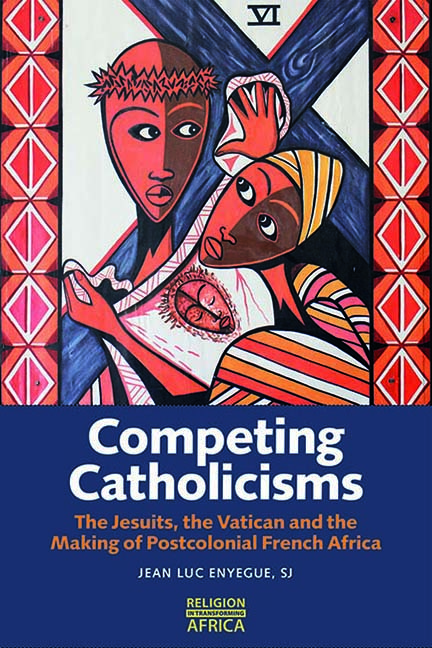Book contents
- Frontmatter
- Dedication
- Contents
- List of Illustrations
- Acknowledgements
- List of Abbreviations
- Glossary
- Chronology of Jesuit Missions in Chad and Cameroon
- Introduction: The End of the Jesuit Mission in Africa?
- Part I The Jesuit Project in West Africa: French Catholicism and Colonialism in Chad, 1935–58
- Part II The Outward Mission: Education and Competing Catholicisms
- Part III The Postcolonial Mission and Catholicity: From Chad to Cameroon, 1962–78
- Conclusion
- Bibliography
- Index
- Previously published titles in the series
2 - Founding Era: The Conservatism of Frédéric de Bélinay, Jesuit Pioneer in Chad, 1946–58
Published online by Cambridge University Press: 16 July 2022
- Frontmatter
- Dedication
- Contents
- List of Illustrations
- Acknowledgements
- List of Abbreviations
- Glossary
- Chronology of Jesuit Missions in Chad and Cameroon
- Introduction: The End of the Jesuit Mission in Africa?
- Part I The Jesuit Project in West Africa: French Catholicism and Colonialism in Chad, 1935–58
- Part II The Outward Mission: Education and Competing Catholicisms
- Part III The Postcolonial Mission and Catholicity: From Chad to Cameroon, 1962–78
- Conclusion
- Bibliography
- Index
- Previously published titles in the series
Summary
On 15 June 1945, Propaganda Fide extended the ‘personal jurisdiction’ of de Bélinay up to the tenth parallel, leading to the official approval of the Jesuit Mission of Chad in February 1946. A year later, in 1947, the Apostolic Prefecture of Fort-Lamy was created. Du Bouchet, a former provincial of Lyon (r. 1937–43), was appointed the first apostolic prefect. He was joined by one of his former novices, Louis Forobert, in 1948. Under du Bouchet, the territory was divided into two additional missions. The Jesuits directed the mission of Fort-Archambault, and the Oblate Fathers directed the mission of Fort-Lamy. The Capuchins would remain at the head of the Chari Mission until 21 May 1951, when the Jesuits took over its eighteen parishes.
As the previous chapter showed, De Bélinay was a forceful defender of France's geostrategic interests in Central Africa against a rising American influence and the double threat of Communism and Islam. Joseph du Bouchet, in contrast, was sent to Chad primarily to carry out the Vatican's agenda of ecclesial Africanisation. This chapter shows that instead of fully pursuing the Vatican's progressive vision of clerical Africanisation, du Bouchet joined the circle of Lefèbvre, René Graffin, and other French missionary bishops in Africa by delaying the development of a Chadian clergy. For du Bouchet, and in continuity with de Bélinay, Chad was a blessing for France's broader strategy in the Middle East, an opportunity to expand the evangelising mission of the Jesuit Province of Lyon, and a retirement place amid the rise of a younger generation of French Jesuits at home. Like de Bélinay before him, du Bouchet embarked on a conquering movement aimed at spreading the gospel while keeping African colonies under French political and cultural influence.
Addressing the conservatism of the Jesuit pioneers of the Chad Mission in this chapter also means revisiting recent Jesuit historiography. Thomas Banchoff, José Casanova, and others have demonstrated the existence of a certain conservatism in the Society from its restoration in 1814 to the Second Vatican Council (1963–65). When analysing the post- Vatican II period, there is ongoing discussion over whether or not Pedro Arrupe created a ‘new’ Society that broke away from this conservatism. Some historians believe that while Arrupe was reforming the Society, the ‘old’ conservatism was threatening the unity of the Jesuit order.
- Type
- Chapter
- Information
- Competing CatholicismsThe Jesuits, the Vatican and the Making of Postcolonial French Africa, pp. 57 - 74Publisher: Boydell & BrewerPrint publication year: 2022



